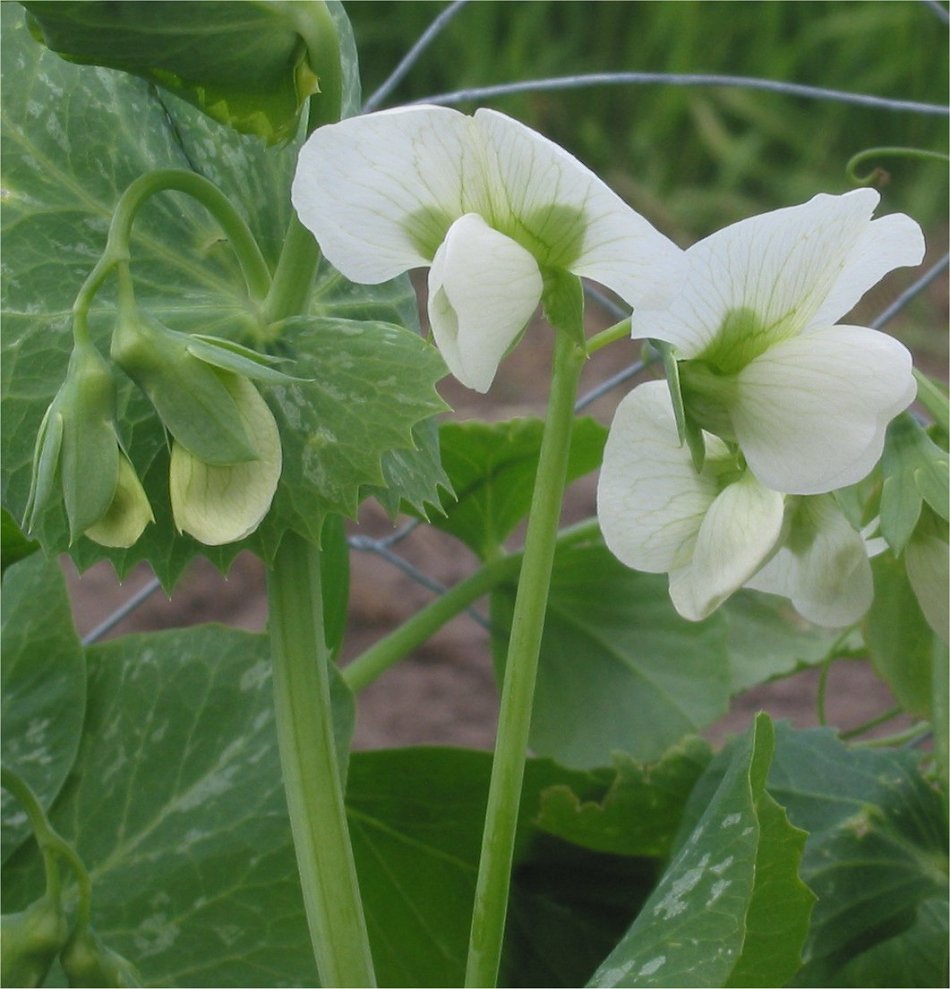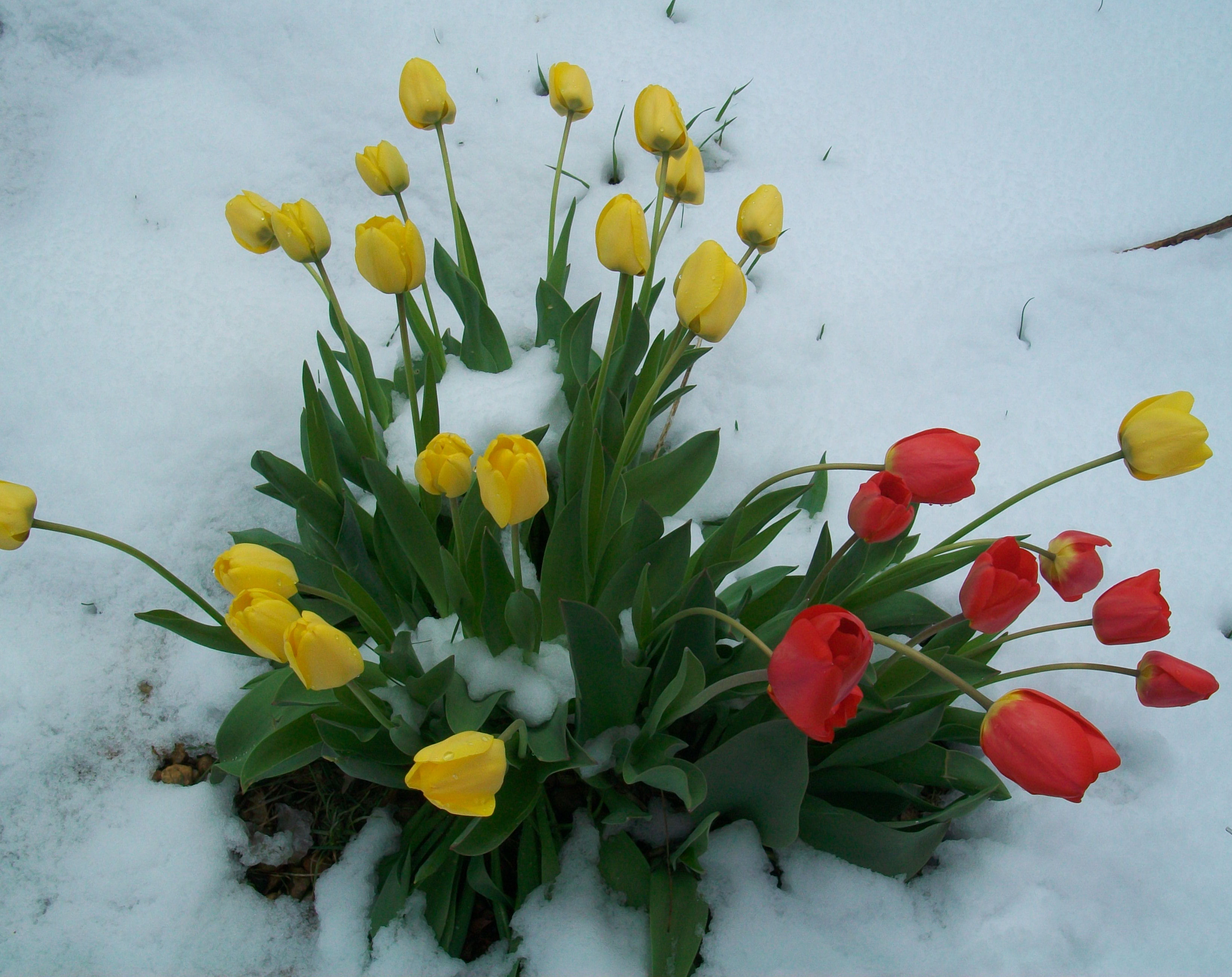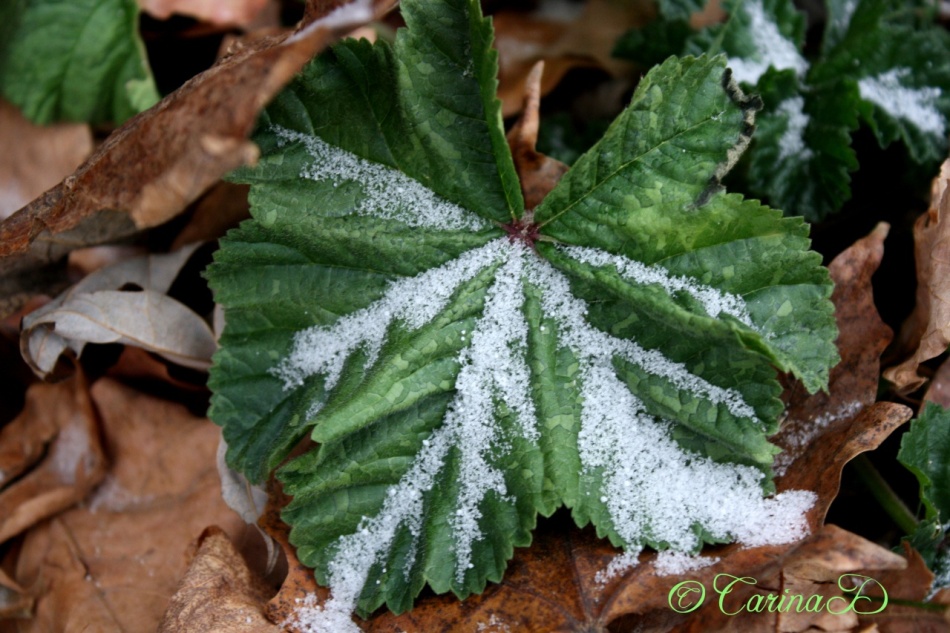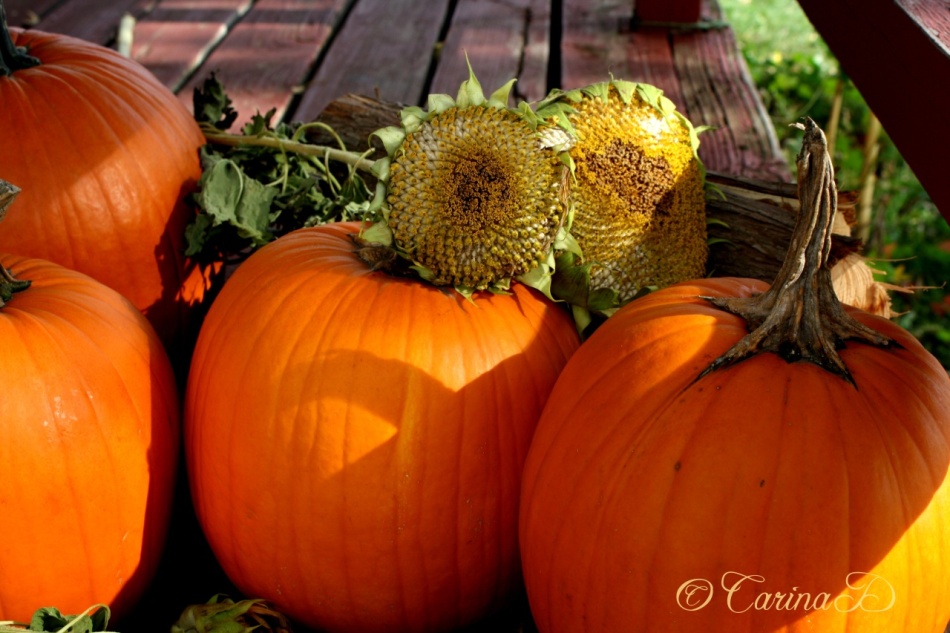Get Your Soil Ready for Spring 🌱🌱 3 Steps to Hit the Ground Running!

Related
Composting ~ How to make your own Compost Bins

https://auntiedogmasgardenspot.wordpress.com/2013/04/08/compostingandbins/

Preparing Your Garden for Winter ❀

PREPARING YOUR GARDEN FOR WINTER
OVERWINTERING PLANTS & OTHER FALL GARDENING TASKS

See our list of fall chores to prepare your garden for winter—and ensure a beautiful and vibrant spring! We’ve covered vegetables, herbs, berries, perennials, roses, trees, and shrubs. ✿
See Also
HOW TO OVERWINTER YOUR PLANTS AND GARDEN
Easy Peasy :) English Peas ~ cold weather vegetables
Botanical name: Pisum sativum, Pisum macrocarpon
Plant type: Vegetable
USDA Hardiness Zones: 3, 4, 5, 6, 7, 8, 9, 10, 11
Sun exposure: Full Sun, Part Sun
Soil type: Loamy
Soil pH: Neutral
Peas are a cool-season crop, now coming in three separate varieties to suit your garden and cooking needs. They are:Pisum savitum, which includes both garden peas (sweet pea, inedible pod) and snow peas (edible flat pod with small peas inside) and Pisum macrocarpon, snap peas (edible pod with full-size peas). They are easy to grow, but with a very limited growing season. Furthermore, they do not stay fresh long after harvest, so enjoy them while you can!
Planting
- To get the best head start, turn over your pea planting beds in the fall, add manure to the soil, and mulch well.
- As with other legumes, pea roots will fix nitrogen in the soil, making it available for other plants.
- Peas will appreciate a good sprinkling of wood ashes to the soil before planting.
- Sow seeds outdoors 4 to 6 weeks before last spring frost, when soil temperatures reach 45 degrees F.
- Plant 1 inch deep (deeper if soil is dry) and 2 inches apart.
- Get them in the ground while the soil is still cool but do not have them sit too long in wet soil. It’s a delicate balance of proper timing and weather conditions. For soil that stays wet longer, invest in raised beds.
- A blanket of snow won’t hurt emerging pea plants, but several days with temperatures in the teens could. Be prepared to plant again.
- Peas are best grown in temperatures below 70 degrees F.
Care
- Make sure that you have well-drained, humus-rich soil.
- Poke in any seeds that wash out. (A chopstick is an ideal tool for this.)
- Be sure, too, that you don’t fertilize the soil too much. Peas are especially sensitive to too much nitrogen, but they may like a little bonemeal, for the phosphorus content.
- Though adding compost or manure to the soil won’t hurt, peas don’t need heavy doses of fertilizer. They like phosphorus and potassium.
- Water sparsely unless the plants are wilting. Do not let plants dry out, or no pods will be produced.
- For tall and vine varieties, establish poles or a trellis at time of planting.
- Do not hoe around plants to avoid disturbing fragile roots.
- It’s best to rotate pea crops every year or two to avoid a buildup of soil-borne diseases.
Pests
- Aphids
- Mexican Bean Beetles
- Fusarium Wilt
Harvest/Storage
- Keep your peas well picked to encourage more pods to develop.
- Pick peas in the morning after the dew has dried. They are crispiest then.
- Always use two hands when you pick peas. Secure the vine with one hand and pull the peas off with your other hand.
- Peas can be frozen or kept in the refrigerator for about 5 days. Place in paper bags, then wrap in plastic.
- If you missed your peas’ peak period, you can still pick, dry, and shell them for use in winter soups.
Recommended Varieties
- ‘Snowbird’ (snow pea), resistant to fusarium wilt
- ‘Sugar Ann’ (snap pea), early variety, short vine
- ‘Green Arrow’ (garden pea), mid-season variety, high yields, resistant to fusarium wilt
Recipes
Wit & Wisdom
If a girl finds nine peas in a pod, the next bachelor she meets will become her husband.
Northerners, got the winter gardening blues? ~ Grow Bulbs Indoors ~ How to
Growing Bulbs Indoors ~ Special techniques bring showy flowers into bloom ~ By Kathy LaLiberte

Amaryllis blooms brighten the home in winter. What’s more, they are among the easiest bulbs to grow indoors.
Growing bulbs indoors lets you enjoy the colors and fragrance of spring when it’s still months away. The key to success with indoor bulbs is to plan ahead.
Many people don’t realize that there are two types of bulbs for indoor growing: those you need to chill and those you don’t. Here’s how to tell the difference.
http://www.gardeners.com/Growing-Bulbs-Indoors/5158,default,pg.html
It’s Easy to Coax Bulbs into Bloom All Winter Long
Forcing bulbs into winter bloom was all the rage in the 1800s. Hyacinths were especially popular, since they’re so easy. Here’s everything you need to know to start enjoying this traditional winter-time pleasure yourself.
https://www.oldhousegardens.com/ForcingBulbs.aspx

http://www.almanac.com/plant/hyacinths

http://www.almanac.com/plant/tulips

http://www.almanac.com/plant/crocuses

http://www.almanac.com/plant/daffodils
Yule – Winter Solstice
Yule: Winter Solstice – Dec 21st/22nd

The origin of the word Yule, has several suggested origins from the Old English word, geõla, the Old Norse word jõl, a pagan festival celebrated at the winter solstice, or the Anglo-Saxon word for the festival of the Winter Solstice, ‘Iul’ meaning ‘wheel’. In old almanacs Yule was represented by the symbol of a wheel, conveying the idea of the year turning like a wheel, The Great Wheel of the Zodiac, The Wheel of Life. The spokes of the wheel, were the old festivals of the year, the solstices and equinoxes.
The winter solstice, the rebirth of the Sun, is an important turning point, as it marks the shortest day, when the hours of daylight are at their least. It also the start of the increase in the hours of daylight, until the Summer Solstice, when darkness becomes ascendant once more.
” And the Yule-log cracked in the chimney,
And the Abbot bowed is head,
And the flamelets flapped and flickered,
But the Abbot was stark and dead.”
H.W. Longfellow ‘King Witlaf’s Drinking Horn (1848)
Read in full here @ the white goddess

Sprouting on the ‘Sill: Growing Salad in Windowsill Gardens
Because lettuce and other salad greens germinate so quickly, it’s easy to grow a salad garden inside on a sunny windowsill. What I like to do is grow a mix of “baby greens,” which means I harvest the leaves before the plant matures. I mix these baby greens in with store bought lettuce for a flavorful salad or snip off a few leaves to top off sandwiches.
Growing baby salad greens and micro greens couldn’t be easier. Simply sow the seeds in sterile potting soil, cover them with a dusting of soil and keep the seeds moist by lightly misting them with water daily. Keep the pots in a warm location until they begin to sprout and then move them to a sunny window. If the plants look spindly or anemic, they need more light. The baby salad greens may require as much as 12 hours of light for healthy growth. A grow light is an easy remedy for this problem. Hang the lights about 6 to 12 inches above the plants.
Baby Lettuce Greens Micro greens are ready to harvest in about 14 days. Clip the seedlings off close to the soil. Baby salad greens will be ready in about 3 to 4 weeks. Trim them off at the base, starting with the outside leaves first.
P Allen Smith more at link here

Sprouting on the ‘Sill: Growing Salad in Windowsill Gardens
 “My students live in a community with little access to affordable fresh fruits and vegetables,” explains Gioya Fennelly, a teacher at Eleanor Roosevelt IS 143(M) in New York City. “100 percent of our population qualifies for free lunch. I developed the windowsill salad garden project to teach students how to grow their own gourmet-quality microgreens with minimal effort and at a fraction of the cost of purchased produce.”
“My students live in a community with little access to affordable fresh fruits and vegetables,” explains Gioya Fennelly, a teacher at Eleanor Roosevelt IS 143(M) in New York City. “100 percent of our population qualifies for free lunch. I developed the windowsill salad garden project to teach students how to grow their own gourmet-quality microgreens with minimal effort and at a fraction of the cost of purchased produce.”
Using recycled containers such as gallon milk jugs, soilless potting mix, compost from a classroom worm bin, and a few packets of seeds, her class begins its exploration into the world of agricultural production. They start plants in an ingenious indoor ‘greenhouse’ – a discarded doughnut display case — that’s large enough to hold 10 to 15 containers of seedlings. It gets the plants off to a good start by providing light and a steady 75° to 80°F temperature. Once the seedlings are mature enough to leave the ‘greenhouse’ they’re moved to a classroom windowsill, or given to students with a sunny window at home. By the end of the project, every family has enjoyed a share of the harvest.
“My students love trying new things. Most have lived in a city all their lives, and have had no opportunity to experience gardening.” Gioya’s windowsill salad garden is an 8- to 10-week unit. “With a little planning, you can harvest the tops in about 3 weeks when the plants are 2″ tall, and continue harvesting every 2 to 3 weeks thereafter. I recommend staggering plantings to lengthen harvest time.”

Turn your Porch into a Garden
This is what i plan on doing this winter as project, converting my porch into solarium for all seasons and growing year round.
See Also …
71 Breezy Porches and Patios Here
How to Make a Greenhouse on a Screen Porch ~ By Michelle Powell-Smith, eHow Contributor
Turn your screened porch into a greenhouse for the winter. You can opt for a year-round permanent greenhouse or a temporary one to use in the winter, depending upon how you normally use your screen porch. Your greenhouse can let you start seeds while there is still snow on the ground, winter over delicate plants and continue your gardening through the winter months.
How to Build a Patio Greenhouse ~ By Cheryl Munson, eHow Contributor
Many homes have gardens — but not every home has a greenhouse. A gardener makes a clear and obvious statement about just how seriously they take gardening and caring for their plantings when they install a greenhouse. It doesn’t take a major investment to have a greenhouse. You can build a “mini” greenhouse to protect your plants through all sorts of weather, and protect your wallet from having to repurchase plants after a frost, drought or rainstorm.
93,622 enclosed porch Home Design Photos
Make Your Patio a Perfect Retreat
How to Make a Four Season Room from a Porch
What to grow in a greenhouse in winter
With the right growing techniques, an unheated greenhouse can be a productive, pollution-free garden asset all through the year.

Seasonal Advice for August: Recipes, Gardening, Folklore
Enjoy our season advice for August: recipes, gardening tips, folklore, and more!
This month, we love to celebrate the fruits of the season. Homemade tomatoes, ripe melon, sweet corn on the cob, and blueberres are just a few of our favorites.
Canning season is here, too, and you can find tips and recipes below.
The end of the month signals the time to start preparing for autumn.
Summer declines and roses have grown rare,
But cottage crofts are gay with hollyhocks,
And in old garden walks you breathe an air
Fragrant of pinks and August-smelling stocks.
—John Todhunter (1839-1916)
Calendar
August is named in honor of the first Roman emperor, Augustus Caesar (63 B.C.– A.D. 14), who was the grandnephew of Julius Caesar.
August 1 traditionally marked the beginning of the serious harvest. “After Lammas Day, corn ripens as much by night as by day.” See more about Lammas Day.
On August 17, Cat Nights Begin, harking back to a rather obscure Irish legend concerning witches; this bit of folklore also led to the idea that a cat has nine lives.
Recipes for the Season
 Try some of our recipes featuring this month’s crops to wrap up the summer:
Try some of our recipes featuring this month’s crops to wrap up the summer:
Pickled Watermelon
Summer Corn Cakes
Great Zucchini Bread
See more summertime recipes at What’s in Season: Summer Recipes.
The summer and fall are also popular times for family gatherings. Visit our Family Reunion Planner for lots of great recipe ideas.
Gardening
 Planting a second (or third) crop? Check our Succession Gardening chartfor last planting dates.
Planting a second (or third) crop? Check our Succession Gardening chartfor last planting dates.
For “how to” harvest all those vegetables, herbs, and fruit, consult our free Plant Guides with information on all your common edibles.
Remember to plant your fall bulbs now: Growing Guide: Fall–Planted Bulbs
Preserve the bounty of the season’s harvest. Try your hand at Pickling and Canning!
See how to store your fruits, vegetables, and herbs for the coming winter.
Everyday Advice
 Planning on finishing up outdoor house projects before the summer ends? See our Home Improvement pages on painting, flooring, wallpapering, roofing, and more.
Planning on finishing up outdoor house projects before the summer ends? See our Home Improvement pages on painting, flooring, wallpapering, roofing, and more.
Bugs buggin’ you? Look to our natural remedies for insect bites and stings.
Astronomy
 August is a wonderful month for star gazing! At a glance, see what’s up in the August sky.
August is a wonderful month for star gazing! At a glance, see what’s up in the August sky.
When is the August Moon? See our August Full Moon Guide for Moon phase dates, best days, and more.
Folklore for the Season
- As August, so February.
- Observe on what day in August the first heavy fog occurs, and expect a hard frost on the same day in October.
- If the first week of August is unusually warm, The winter will be white and long.
Related Articles














 To help you prepare for this holiday season, check out our
To help you prepare for this holiday season, check out our .jpg) This is a good time to start pruning dead and dangerous limbs from trees.
This is a good time to start pruning dead and dangerous limbs from trees. To help you with this holiday season, check out some of our tips and fun crafts:
To help you with this holiday season, check out some of our tips and fun crafts:.jpg) The dark winter night sky is a joy to behold.
The dark winter night sky is a joy to behold. .jpg) Love snow? Check out our
Love snow? Check out our 












Recent Comments